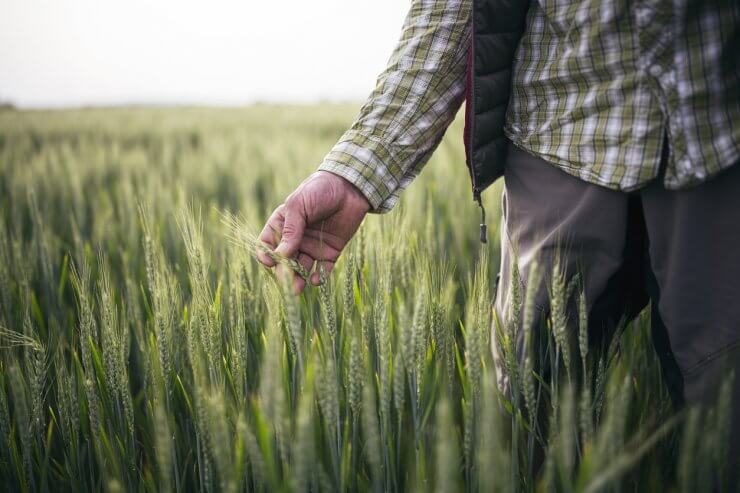
Man inspecting wheat in a wheat field
Once your wheat seeds have sprouted, there’s not much to do but watch your plants grow. Wheat is self-pollinating, doesn’t need much water, and will thrive on the nutrients you and Mother Nature put into the soil before planting.
Keep a sharp eye on weed production at the beginning, but because wheat is densely planted, once it starts to grow, weeds will be crowded out or deprived of light.
After the wheat plants are established, you only need to supplement rainfall if the weather turns very dry. In that case, water deeply by hand at ground level or with a soaker hose. This keeps water at the roots and avoids wetting the tops of the wheat which can encourage disease. If you must use overhead watering, water in the morning so the plants have time to dry out during the day.
After harvesting spring wheat, you can leave the wheat ‘stubble’ (bottom of the stalks) in place until the next spring, or till the stubble under and plant a different crop there.
Planted in the fall, winter wheat will live through winter up to zone 3, giving it a head start on next year’s growth. You don’t need to do anything through the winter unless you have an unusual deep freeze, in which case you may want to cover the crop temporarily. After harvest, till under the stubble and replant with winter wheat seeds in the fall, or plant another crop in its place.
How do you tend to your wheat plants during the growing season? Please tell us your tips for nurturing healthy plants.


 Previous
Previous

